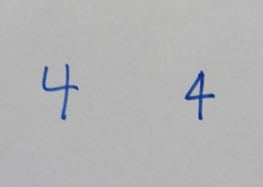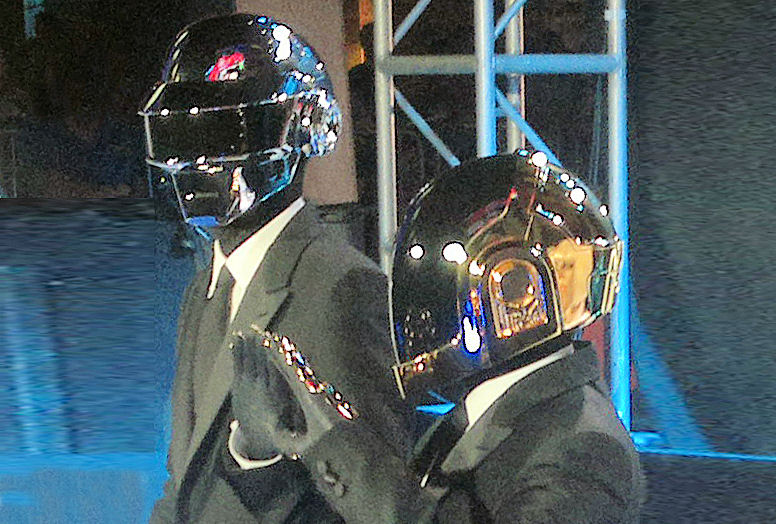|
The Nomi Song
''The Nomi Song'' is a 2004 Documentary film about the life of singer Klaus Nomi, written and directed by Andrew Horn. The film debuted at the Berlin International Film Festival in February 2004, where it won a Teddy Award for "Best Documentary Film." Structure Through interviews with Nomi's collaborators and family members, the documentary lightly brushes on the early life of Klaus Sperber before settling into the five-year period depicting the German singer's reinvention of himself as Klaus Nomi, his rise to fame in New York, his break into the international music market and his death from complications of AIDS in 1983. In addition to interview footage and still photography, the film features archival footage of Nomi performances. The film features East Village personalities such as Kristian Hoffman and songs by artists such as The Bongos, Marbles, the Mumps, and David Bowie. Critical reception In his review, ''Entertainment Weeklys Owen Gleiberman described the documentary ... [...More Info...] [...Related Items...] OR: [Wikipedia] [Google] [Baidu] |
Andrew Horn (filmmaker)
Andrew Horn (September 16, 1952 – August 24, 2019) was an American film producer, director and writer. He was the winner of the 2004 Teddy Award for ''The Nomi Song'' in the category Best Documentary Film. In 2014, he directed ''We Are Twisted Fucking Sister!'', a documentary about American heavy metal band Twisted Sister. Career A New Yorker by birth, Horn studied at NYU. He moved to Berlin, Germany in 1989 for a fellowship program. His Emmy-winning film research were included on projects by BBC, Channel 4, PBS, HBO and the Paul Robeson, Paul Robeson Foundation alongside films by Spike Lee and Michael Moore. Death He was 66 when he died of cancer in Berlin on August 24, 2019. Filmography *''Doomed Love'' (1984) *''The Big Blue'' (1988) * ''East Side Story'' (1997) *''The Nomi Song'' (2004) *''Jesse Owens (film), Jesse Owens'' (2013; research) *''We Are Twisted Fucking Sister!'' (2014) References External links * Andrew Horn retrospective on Vimeo {{DEFAULTSORT:H ... [...More Info...] [...Related Items...] OR: [Wikipedia] [Google] [Baidu] |
Countertenor
A countertenor (also contra tenor) is a type of classical male singing voice whose vocal range is equivalent to that of the female contralto or mezzo-soprano voice types, generally extending from around G3 to D5 or E5, although a sopranist (a specific kind of countertenor) may match the soprano's range of around C4 to C6.A sopranist is a term used to describe a countertenor whose vocal range is so high it is equivalent to that of a soprano; however, this term is widely used falsely. Countertenors often are baritones or tenors at core, but only on rare occasions do they use their lower vocal range, instead preferring their falsetto or high head voice. The nature of the countertenor voice has radically changed throughout musical history, from a modal voice, to a modal and falsetto voice, to the primarily falsetto voice which is denoted by the term today. This is partly because of changes in human physiology and partly because of fluctuations in pitch. The term first came into ... [...More Info...] [...Related Items...] OR: [Wikipedia] [Google] [Baidu] |
2004 LGBT-related Films
4 (four) is a number, numeral and digit. It is the natural number following 3 and preceding 5. It is the smallest semiprime and composite number, and is considered unlucky in many East Asian cultures. In mathematics Four is the smallest composite number, its proper divisors being and . Four is the sum and product of two with itself: 2 + 2 = 4 = 2 x 2, the only number b such that a + a = b = a x a, which also makes four the smallest squared prime number p^. In Knuth's up-arrow notation, , and so forth, for any number of up arrows. By consequence, four is the only square one more than a prime number, specifically three. The sum of the first four prime numbers two + three + five + seven is the only sum of four consecutive prime numbers that yields an odd prime number, seventeen, which is the fourth super-prime. Four lies between the first proper pair of twin primes, three and five, which are the first two Fermat primes, like seventeen, which is the third. On the other hand, t ... [...More Info...] [...Related Items...] OR: [Wikipedia] [Google] [Baidu] |
German LGBT-related Films
German(s) may refer to: * Germany (of or related to) **Germania (historical use) * Germans, citizens of Germany, people of German ancestry, or native speakers of the German language ** For citizens of Germany, see also German nationality law **Germanic peoples (Roman times) * German language **any of the Germanic languages * German cuisine, traditional foods of Germany People * German (given name) * German (surname) * Germán, a Spanish name Places * German (parish), Isle of Man * German, Albania, or Gërmej * German, Bulgaria * German, Iran * German, North Macedonia * German, New York, U.S. * Agios Germanos, Greece Other uses * German (mythology), a South Slavic mythological being * Germans (band), a Canadian rock band * "German" (song), a 2019 song by No Money Enterprise * ''The German'', a 2008 short film * "The Germans", an episode of ''Fawlty Towers'' * ''The German'', a nickname for Congolese rebel André Kisase Ngandu See also * Germanic (other) * Germa ... [...More Info...] [...Related Items...] OR: [Wikipedia] [Google] [Baidu] |
2000s German-language Films
S, or s, is the nineteenth letter in the Latin alphabet, used in the modern English alphabet, the alphabets of other western European languages and others worldwide. Its name in English is ''ess'' (pronounced ), plural ''esses''. History Origin Northwest Semitic šîn represented a voiceless postalveolar fricative (as in 'ip'). It originated most likely as a pictogram of a tooth () and represented the phoneme via the acrophonic principle. Ancient Greek did not have a phoneme, so the derived Greek letter sigma () came to represent the voiceless alveolar sibilant . While the letter shape Σ continues Phoenician ''šîn'', its name ''sigma'' is taken from the letter ''samekh'', while the shape and position of ''samekh'' but name of ''šîn'' is continued in the '' xi''. Within Greek, the name of ''sigma'' was influenced by its association with the Greek word (earlier ) "to hiss". The original name of the letter "sigma" may have been ''san'', but due to the complica ... [...More Info...] [...Related Items...] OR: [Wikipedia] [Google] [Baidu] |
German Documentary Films
German(s) may refer to: * Germany (of or related to) **Germania (historical use) * Germans, citizens of Germany, people of German ancestry, or native speakers of the German language ** For citizens of Germany, see also German nationality law **Germanic peoples (Roman times) * German language **any of the Germanic languages * German cuisine, traditional foods of Germany People * German (given name) * German (surname) * Germán, a Spanish name Places * German (parish), Isle of Man * German, Albania, or Gërmej * German, Bulgaria * German, Iran * German, North Macedonia * German, New York, U.S. * Agios Germanos, Greece Other uses * German (mythology), a South Slavic mythological being * Germans (band), a Canadian rock band * "German" (song), a 2019 song by No Money Enterprise * ''The German'', a 2008 short film * "The Germans", an episode of ''Fawlty Towers'' * ''The German'', a nickname for Congolese rebel André Kisase Ngandu See also * Germanic (other) * Germa ... [...More Info...] [...Related Items...] OR: [Wikipedia] [Google] [Baidu] |
2004 Documentary Films
4 (four) is a number, numeral and digit. It is the natural number following 3 and preceding 5. It is the smallest semiprime and composite number, and is considered unlucky in many East Asian cultures. In mathematics Four is the smallest composite number, its proper divisors being and . Four is the sum and product of two with itself: 2 + 2 = 4 = 2 x 2, the only number b such that a + a = b = a x a, which also makes four the smallest squared prime number p^. In Knuth's up-arrow notation, , and so forth, for any number of up arrows. By consequence, four is the only square one more than a prime number, specifically three. The sum of the first four prime numbers two + three + five + seven is the only sum of four consecutive prime numbers that yields an odd prime number, seventeen, which is the fourth super-prime. Four lies between the first proper pair of twin primes, three and five, which are the first two Fermat primes, like seventeen, which is the third. On the other ... [...More Info...] [...Related Items...] OR: [Wikipedia] [Google] [Baidu] |
2004 Films
2004 in film is an overview of events, including the highest-grossing films, award ceremonies, festivals, a list of country-specific lists of films released, notable deaths and film debuts. ''Shrek 2'' was the year's top-grossing film, and '' Million Dollar Baby'' won the Academy Award for Best Picture. Evaluation of the year Renowned American film critic and professor Emanuel Levy described 2004 as "a banner year for actors, particularly men." He went on to emphasize, "I can't think of another year in which there were so many good performances, in every genre. It was a year in which we saw the entire spectrum of demographics displayed on the big screen, from vet actors such as Clint Eastwood and Morgan Freeman, to seniors such as Pacino, De Niro, and Hoffman, to newcomers such as Topher Grace. As always, though, the center of the male acting pyramid is occupied by actors in their forties and fifties, such as Sean Penn, Johnny Depp, Liam Neeson, Kevin Kline, Don Cheadle, J ... [...More Info...] [...Related Items...] OR: [Wikipedia] [Google] [Baidu] |
Man Parrish
Manuel "Man" Parrish (born May 6, 1958) is an American songwriter, vocalist and producer. He, along with artists such as Yellow Magic Orchestra, Kraftwerk, Art of Noise, Arthur Baker, Afrika Bambaataa, John Robie, Jellybean Benitez, Lotti Golden, Richard Scher and Aldo Marin, helped create and define electro in the early 1980s. Early life Parrish was born and raised in Brooklyn, New York. He left home at the age of 14 and became a member of the crowd that converged nightly at the Studio 54 nightclub in Manhattan. The nickname "Man" was given to Parrish by Andy Warhol, and first appeared in Warhol's ''Interview'' magazine. Career Parrish's early live shows at Bronx hip-hop clubs were spectacles of lights, glitter, and pyrotechnics, which drew as much from the Warhol mystique as the Cold Crush Brothers. His first release was "Hip Hop, Be Bop (Don't Stop)" issued in 1982, which has later been featured in the film ''Shaun of the Dead'', the video game '' Grand Theft Auto: Vice C ... [...More Info...] [...Related Items...] OR: [Wikipedia] [Google] [Baidu] |
The Moog Cookbook
The Moog Cookbook was an American electronic duo consisting of Meco Eno (Roger Manning) and Uli Nomi (Brian Kehew). The project was a parody of and tribute to the novelty Moog records of the late 1960s and early 1970s, which featured cover versions of popular songs using the then-new Moog synthesizer. The band released two albums in the mid-1990s: ''The Moog Cookbook'' (1996) featured instrumental cover versions of contemporary alternative rock songs, while its follow-up, '' Ye Olde Space Bande'' (1997), featured similar covers of classic rock tracks. The pair reunited in 2004 to record "Bob's Funk" for the soundtrack of the film '' Moog'', a documentary on the life of Robert Moog. In 2005, the group independently released '' Bartell'', an archival compilation album consisting of tracks recorded for compilations and soundtracks, remixes for other artists, holiday songs and other rarities. Formation and concept The Moog Cookbook was formed by Roger Manning and Brian Kehew sh ... [...More Info...] [...Related Items...] OR: [Wikipedia] [Google] [Baidu] |


